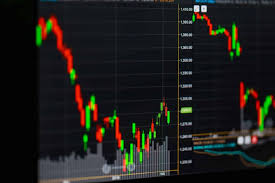
Understanding Forex Trading Platforms: The Trader’s Essential Guide
Forex trading has gained immense popularity over the years, attracting millions of traders worldwide. At the core of this trading activity lies the forex trading platform, an essential tool that facilitates the buying and selling of currency pairs. This article will delve deep into what forex trading platforms are, their features, and tips on choosing the right one for your trading needs. Moreover, if you are in Indonesia, you can also explore forex trading platform Forex Brokers in Indonesia to find suitable options for your trading endeavors.
What is a Forex Trading Platform?
A forex trading platform is software that enables traders to execute trades, analyze the market, and manage their accounts. These platforms come in various forms, including web-based, desktop, and mobile applications. They provide tools for charting, technical analysis, and trading signals, allowing traders to make informed decisions based on market movements.
Types of Forex Trading Platforms
There are primarily two types of forex trading platforms: proprietary platforms and third-party platforms. Each has its own distinct advantages, which we will explore below.
1. Proprietary Trading Platforms
Proprietary platforms are developed by brokerage firms and are designed specifically for their clients. These platforms often feature exclusive tools and customizations. It is essential to note that while proprietary platforms may offer unique features, they could be less adaptable than third-party platforms. Examples of proprietary platforms include the MetaTrader 5 offered by some brokers and cTrader by others.
2. Third-Party Trading Platforms
Third-party platforms, such as MetaTrader 4 (MT4) and MetaTrader 5 (MT5), are widely used among forex traders globally. These platforms are favored for their versatility and ease of use. They are not tied to a single broker, allowing traders to switch brokers while retaining familiarity with the platform. MT4, for instance, is renowned for its user-friendly interface, extensive library of trading indicators, and automated trading capabilities through Expert Advisors (EAs).
Key Features of Forex Trading Platforms
When looking for a suitable forex trading platform, consider the following key features:
1. User Interface
A clear and intuitive user interface is essential for an effective trading experience. A platform that is easy to navigate can significantly reduce the learning curve for new traders.
2. Charting Tools and Technical Indicators
Quality charting tools and a wide range of technical indicators are crucial for traders to analyze market trends effectively. Look for platforms that offer customization options for charts and allow for adding various indicators.
3. Security
Security should be a top priority when choosing a forex trading platform. Ensure the platform uses encryption and adheres to regulatory standards to protect your personal and financial information.
4. Customer Support

Reliable customer support is critical, especially for traders who may encounter technical issues. Check for platforms that offer 24/7 customer service through various channels, including live chat, phone, and email.
5. Mobile Trading
With the rise of mobile trading, platforms that provide a robust mobile app can enhance your trading experience. Look for platforms that offer seamless functionality on both desktop and mobile, allowing for trading on the go.
Choosing the Right Forex Trading Platform
Deciding on a forex trading platform can be overwhelming, given the multitude of options available. Here are some tips to simplify your decision-making process:
1. Assess Your Trading Style
Your trading style significantly influences the choice of platform. Day traders may require features such as fast execution speeds and comprehensive charting tools, while long-term investors might focus more on fewer, straightforward features.
2. Read Reviews and Testimonials
Before committing to a platform, read reviews and testimonials from other traders. Look for feedback on performance, ease of use, and customer service.
3. Utilize Demo Accounts
Many platforms offer demo accounts that allow you to test the features and functionalities without risking real money. Take advantage of this option to determine if the platform aligns with your needs.
4. Compare Fees and Spreads
The costs associated with trading, such as spreads and commissions, can impact your profitability. Compare these costs across different platforms to find one that offers competitive pricing.
The Future of Forex Trading Platforms
The landscape of forex trading platforms is continuously evolving. With advancements in technology, we may see even more innovative features and tools designed to enhance trading efficiency and profitability. Automated trading systems powered by artificial intelligence (AI) and machine learning are on the rise, promising to revolutionize how traders analyze data and make trading decisions.
Conclusion
Forex trading platforms serve as the gateway to the forex market, facilitating trades and providing essential tools for analysis. By understanding the types of platforms available, their key features, and how to choose the right one, traders can enhance their trading experience and improve their chances of success.
In summary, whether you are a novice trader or a seasoned professional, selecting the right forex trading platform is crucial for navigating the complexities of the forex market effectively. Always prioritize security, customer service, and features that suit your individual trading style. Happy trading!